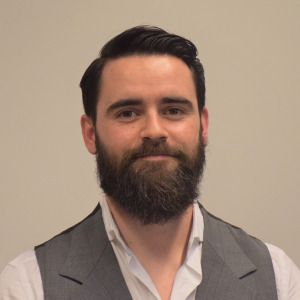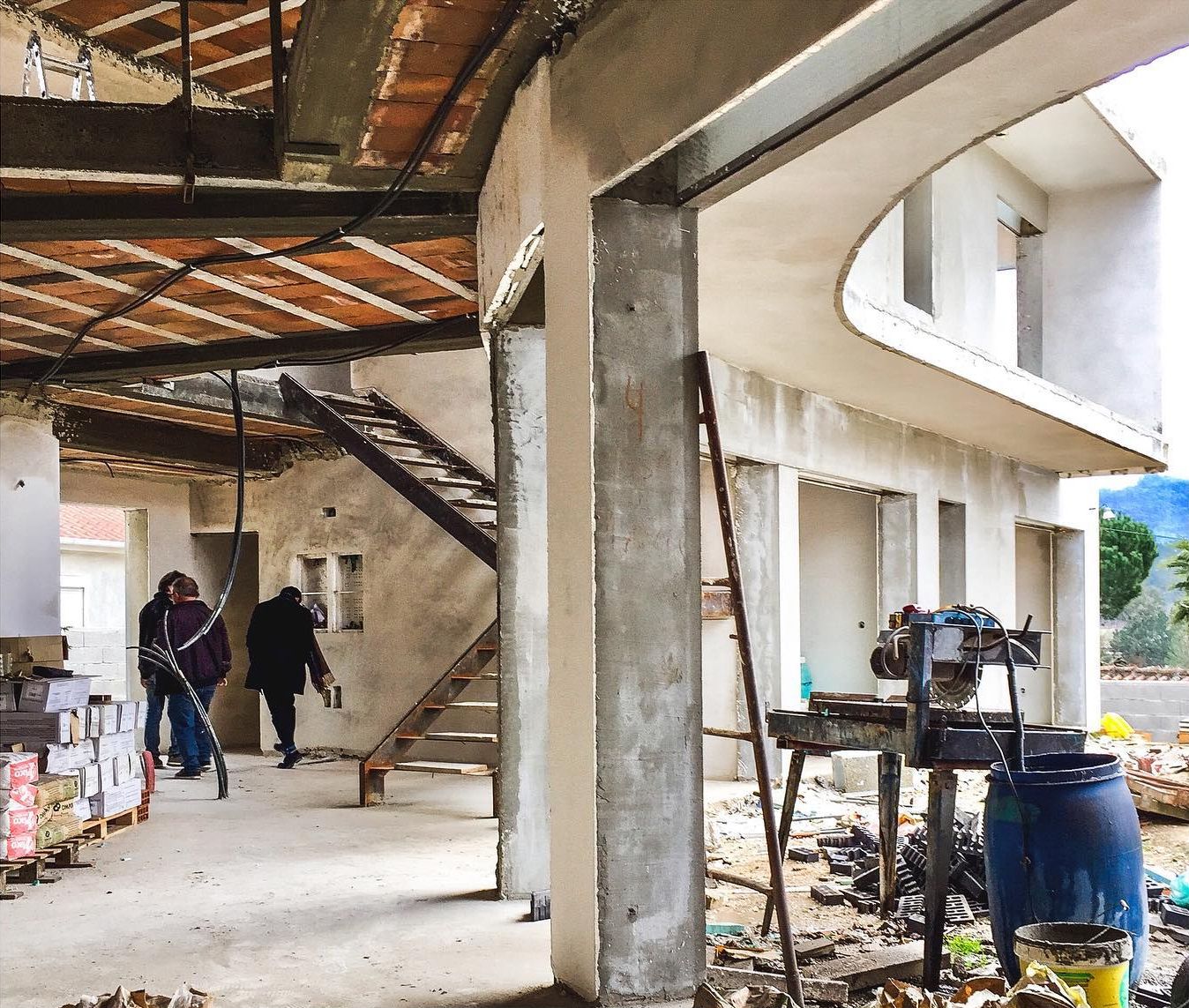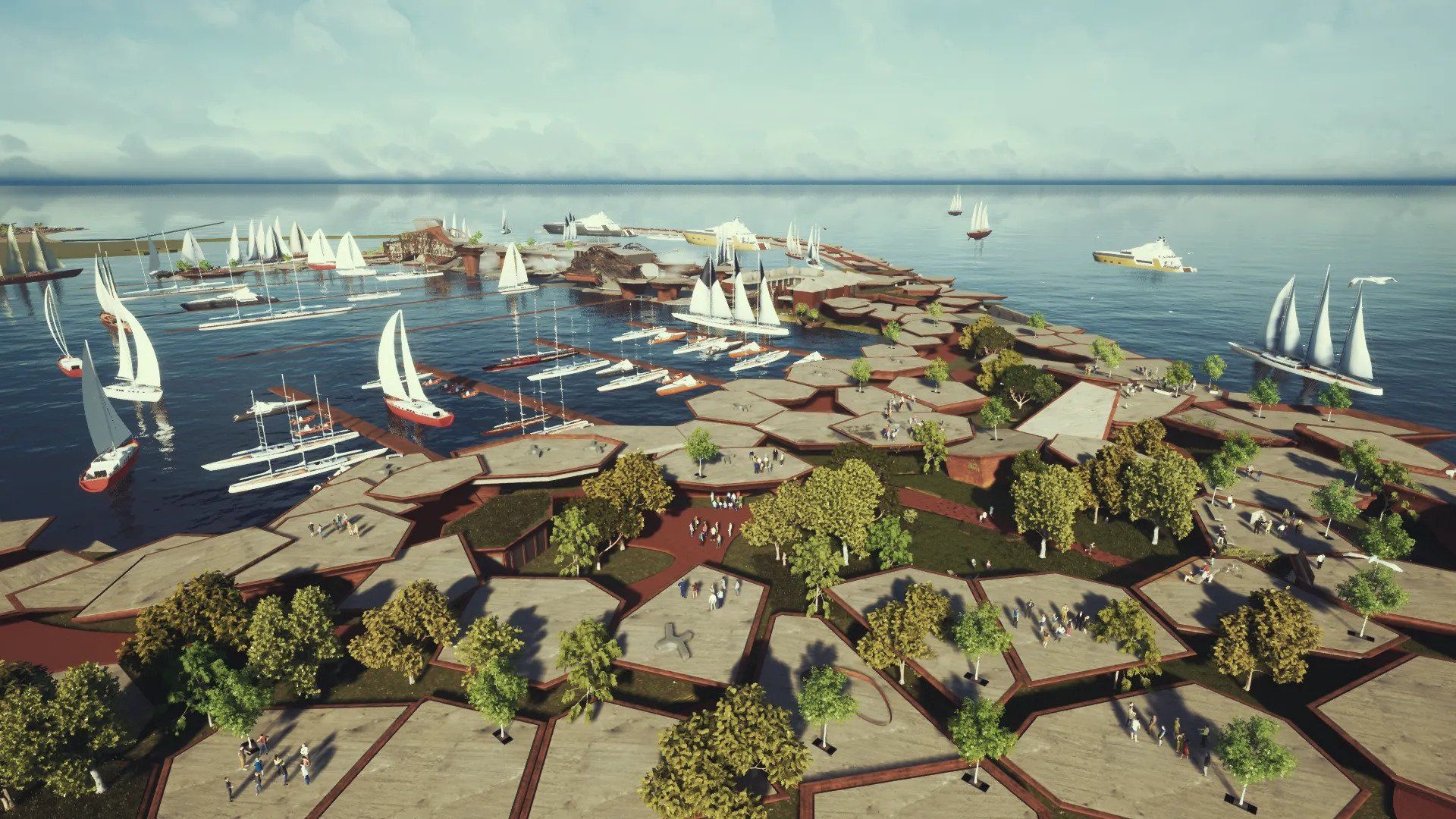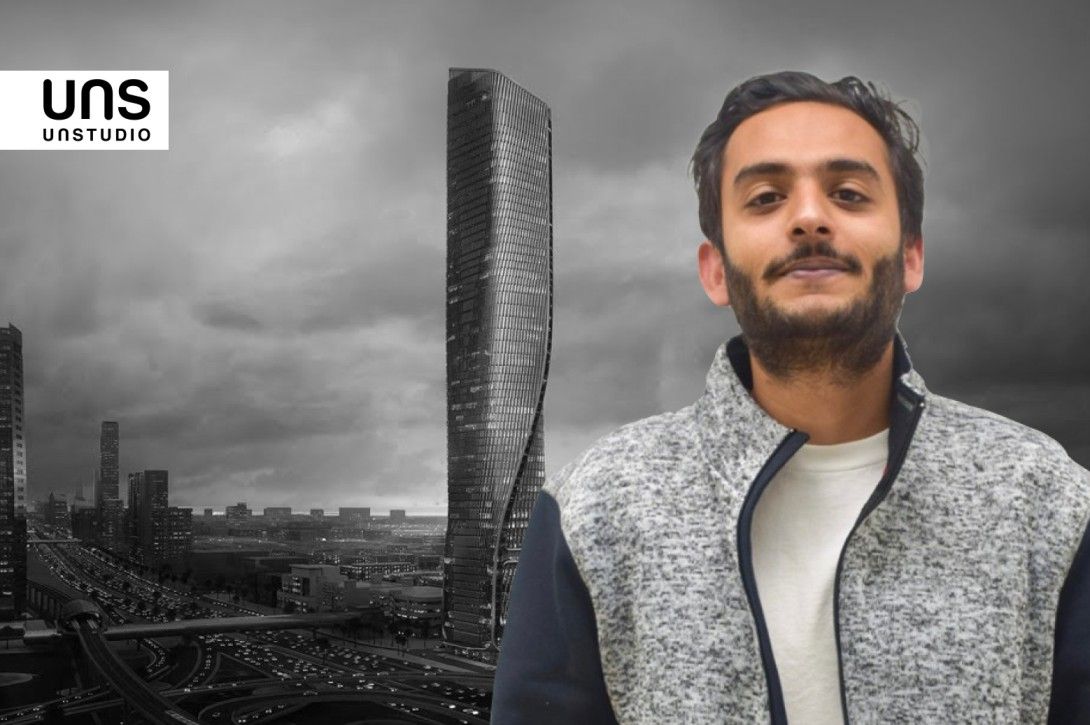PROGRAMS
Join thousands of people who organise
work and life with Novatr.
Starting Your Own Architecture Firm: An Architect's Success Story
Thet Hnin Su Aung
15 mins read
June 25


André Malheiro, Founder and Principal architect, AM-arqstudio
Knowing only a tool to do a project is not enough. You need to know how to manage information, and how to create elements that will allow you to do things better, for example, parametric workflows.
1. You have worked both as an architect and later as a BIM specialist. Can you tell us about your professional journey up to this point?
Finding My Own Path
I started off like everyone else. I was trying to find the most suitable company according to my situation then. I ended up working at a company near my family's house as it was easier for me to travel. That was my first experience - learning how things are more pragmatic than what you learnt at school. Everything was not exactly what I was expecting. I knew nothing, and I needed to start finding my own path.
It was a good opportunity to understand what I liked and wanted to do in the future. While working there, I mostly did changes to the project drawings. I was getting tired of changing things just because someone told me the wrong information or someone else thought of another way. Because in the end, as an architect, I was in charge of changing everything, even if the information I received was wrong.
So I proposed finding new ideas, and technical solutions that would allow better workflows instead of just trying to redo things that were not well communicated from the beginning. At that point, I tried to bring Revit, one of the most-used BIM software, inside the company, but they were not interested. After a couple of weeks of thinking, they decided not to go with it.
Knowing a Tool is Not Enough
In the beginning, like almost everyone, I was looking for the tool itself. I needed a tool that would allow me to do things better - that would take away all the time I was redoing things. So I applied to another company that was already working with Revit. But they were searching for someone who was able to use the software. And I was not that guy.
So I spent my time after work creating projects in Revit, trying to put something on my portfolio, trying to understand the tool better, and then stamped it on my CV and applied to that company. Later I got the job.
For the next eight to nine months, I was working with Revit every day. But from the beginning, I was always trying to do my own projects, trying to identify what I could do that had my own language, my own ideas. So I did projects with Revit at the company while experimenting on my own after work. I was having extra hours of practice. That was a great experience because I really learnt a lot.
I also had colleagues who were really good at their work. I thought I needed to reach that level. I had a good relationship with the company but I was looking for something more. Eventually, I started to understand that knowing only a tool to do a project is not enough. You need to know how to manage information, and how to create elements that will allow you to do things better, for example - parametric workflows.
Going Beyond Tools
Then I applied to a company in a major city in Portugal that was already working with Revit. The team already knew the tool or a part of it but wasn't able to do anything with the software. I think it was a key moment because I realised knowing the tool alone means you are just using Revit the same way as other tools, which is ineffective. Imagine trying to use Revit but still trying to draw over your screen with a pencil. Only after a year or so did they start properly learning BIM.
Afterwards, I started to create content for the company. I was more like a BIM manager even if I did not have all of the knowledge, but I was eager to learn. I knew lots of things here and there, but I needed to glue everything together, and the company was also in that process.
Then I was teaching. I was showing them how to apply tools to the project while also creating content so that it was easier for my colleagues to use the tool. When I left, everyone was doing projects in Revit, and even now they are still working with it.
Back then, I was doing architecture projects along with these implementations. So it started to get really complicated at certain points. I think it was also cultural. In a small company, people tend to do multiple jobs and have multiple roles. I worked on different things and was not able to focus on anything.
One Step Closer to BIM
I wanted to learn more about BIM, so I applied for an International Master's in BIM and was accepted. I was also creating my company at that point. It was really tricky for me because I was studying almost every day and then going home working and actually applying the BIM principles that I learnt during the day to my project. So it was an intense year.
During my thesis, I also had the opportunity to work for a company that was doing BIM implementation and developing tools for Revit. I knew at that point that BIM technology was a vast world which was an eye-opener for me, along with the realization that what I was looking for in my early career years was not exactly what I was looking for at this moment. Evolution is constant, so you need to be always aware of that.
I was always trying to find something new. It was my way of being in this field, trying to find the next big thing that would make a better project. I am not applying a new tool just because. I am using it because I find its value in my project.

Casa 15 (Source: https://www.am-arqstudio.com)
2. Now you also have your own architectural design firm, am-arqstudio. Why and how did you manage to start your own firm?
The Beginning of My New Journey
Starting your own firm is rather difficult because it is very risky. It takes courage. Many people are creating their own companies, but you have to realize that the best way to promote some good solutions in the industry is to be free of other people's concerns. I was, at a certain point, really blocked by others’ questions about finding a good solution or what we can do. And that was not working for me.
I understand that for a company to work there are some boundaries regarding the time you can spend, the research you can use and even the tools you can purchase. But for me, that was also blocking my creativity. So I was in the middle of this process of trying to find the best solutions to create a project. Being in a company, I was unable to spend time researching the application of certain solutions. It was making me unhappy.
A Reflection of My Principles
The last part of the company name - ‘studio’ of ‘am-arqstudio’ - is something I wanted to keep because my idea was always about having the capacity of using the work we do to study and develop new ways of doing things better. The idea is to promote this search, this capacity for innovation, trying to develop enough knowledge and content that will allow it to evolve instead of just going with the flow.
So it is a mix of technology and architectural practice. It is important for me to have these connected to have the time and the freedom of mind, at any point, to simply stop and just go look at things that can impact projects. This was something I was unable to do in other companies. I understand why. Usually, people don’t pay someone just to do research, but I think it's part of the process which brings good value to the company and the people that work here. Because doing the same thing for 40 or 50 years is not how I see this profession.
Now I am happy to be working side by side with people who are in the industry way longer than I have, but have the same principle – the principle that I am able to adapt, I am able to see what comes next, and I am always researching for something new. It means that you are not alone and it is a relief when you know that other people have succeeded on this path.
3. What is the best thing about starting your own architecture firm? And what challenges did you face along the way?
I will start with the challenges that I am still facing because, to be honest, there are always new challenges. The scalability and the fact that you are always quite alone because it is largely a process in your mind – you need to be okay with these facts. Trying to take things off your mind and make them clear enough so you can apply them is one of the biggest challenges.
I think the best feeling is when you are able to do a good job, and the client is happy.
When I was on the other side, just working for companies, that is something I missed – the relation and the translation of the information. In architecture, this is really important because you need to translate ideas from a client who probably does not have the knowledge in the field and you need to create a project, a design that answers those issues.
In the end, you spend years interacting with people you never knew before, and you reach that key moment when the client goes inside the house for the first time as a finished product.
That moment of silence when a client goes inside is a frightening moment but also really enjoyable. You can figure out when a client truly understands the value. Bringing value to these projects where people spend too much money puts lots of responsibility on our side because you need to be able to deliver a product that lives up.

4. How did you land your first project?
The First Potential Clients
I think the scale of the projects you land is also related to the people that know you well. One of the first projects I won was for the same company I was working for (but not as an architect). During university vacations, I was at the construction site helping out my father who was working for that company. A year after finishing architecture school, I was asked to coordinate a project and propose some ideations for one of the buildings.
It is all about what people see in you, even when you are still studying as an architect. So if you are able to communicate well with just one person, this will still have an impact. Those clients asked me questions to test me. They also had confidence that I could do it because they knew me, they knew I was not afraid of going to the construction site and getting things done.
And the family is the second step, right? There is always someone in our family who wants to build out and say we have an architect in the family, let's go with him and so on. One thing follows the other.

Construction in progress (Source: https://www.am-arqstudio.com)
Valuable Connections
When you are building a company, having people around you who want to build or being in a good economic conjuncture can help you, but it’s all about your speech (how you communicate).
One of the most interesting projects I have done started during a vacation. The clients had a project, and they had decided they would work with a more experienced architect. I was okay with that. We need to be okay with it. Sometimes, you can also lose the work you want.
But during the vacation, we were informally speaking about architecture and their project. I just started playing with some volumes on the table, giving them ideas. They were really pleased, and almost every night we talked about projects and architecture. When we came back, they said they wanted to work with me.
Speaking with Clear Interest and Intention
I understood at that point that if you are clear with your intentions in the way you speak with a client who does not have the knowledge of architecture, they will start to understand that you are the right person to translate what they have on their mind into a real thing.
Sometimes we forget this, and then it becomes all about office work. So in the end, they were able to also build their house without overspending on extra things because I was using BIM at that point. This experience was like a test. Ultimately, they spent less than what they were predicting. And that's a good result.
5. Networking is essential for any professional, even more so for architects. How do you manage to build connections and network with people to grow your firm?
I think networking is something you start to appreciate when you get some years of experience. Initially, it is just friends and family and that is not profitable or sustainable.
Networking is something I'm still working on. It's a daily job because it's about finding people that follow the same principles. It can be people we have small interactions with on a daily basis or with others that take much more time, or at least it won’t happen immediately. Most likely the networking you do will become valuable in a couple of years or more.
The most interesting aspect of networking is that I can only find one issue by myself, whereas, in a network, everyone can find and share the problems they have found. We can discuss them, sometimes making us think about things we probably never thought of. Because you realise you can sooner or later encounter the same issue. So why not try to figure out the solution for this together.
Overall, I think networking is something that everyone should work on. It takes time, it takes experience. To be honest, I am not the most experienced person at networking. I am still working on it, but I understand the value, and I am forcing myself also to develop this network. Because in the end, the people, your experience, the user experience, and all the opportunities and tests that people have done will have an impact on your own project and on your own way of seeing things.

Sport Citadel competition project (Source: https://www.am-arqstudio.com)
6. Is it necessary to choose a niche when starting a firm? If so, how do we choose?
That is a tricky question. One of the first post-graduation discussions I had with a friend was also about specialisation. She suggested that we specialised, but I was not sure what I wanted to do. I wanted to explore and do different things. If you try various typologies, you can add extra value because you have more knowledge about certain project elements. But I will say that I do not want to be a specialist.
I had a similar discussion with another mentor about having someone that is able to connect the dots and find the best solutions for the right problem. I will apply the same principle to architecture and this idea of specialization. I think it is necessary to understand the value of diversification. You may need to find someone who is specialised, and who can solve an issue in a matter of minutes.
To me, as a company owner, it is more important to hire and identify the right person that may be more or less specialized. It works with me because a specialist understands the value that they can bring to the company. So I am putting a team of people instead of just having someone that is really good doing everything. But I will stay with the generalist. You may not be the person to go to with an issue if you are not specialized, but you will be the person that coordinates and gets these issues solved in a project. You manage the teams, you know what is needed, and you just need to ask someone to do it. In the end, it is still all about translating information.
7. What qualities do you look for while recruiting a team member?
I am still learning how to recruit people because I was on the other side not so long ago. But it is to understand the intent of their time with us. Of course, people have their own intentions, but because you are a company that is just starting, if people leave in a couple of months, there is no value for them, nor for us as a company.
So I’d say we find value in people with the same principles who understand and aid in the company’s development while also gaining knowledge and evolving with the company. From a certain point of view, it is one of the main values of soft skills. But that is assuming you have the technical skills.
As a BIM company, knowledge of BIM software and processes is one of the necessary skills. I need to make sure they are able to handle the work. It is also not as simple as asking if they know how to use Revit. I think it is the principle of having these alignments about what they want to achieve in their careers and how we can grow together. It is important to state their willingness to work, their skills and experience, along with the benefits they will bring to the company. I think this will be the division between what we can consider soft skills and hard skills – the technical and knowledge of BIM methodology, aligning with the company’s ideas, and of course, staying with us for as much time as possible.
8. What advice would you give someone who wants to start their own firm?
I would rephrase and say it is the advice I would like someone to give me back then and helped me find it –understanding where you have value in the industry. How are you different from what already exists in the market? Because if you are just targeting the same thing as 1000 people or companies, it is difficult to prove that you have a special value. You are just one of the 1000s. I would say find what you like, that’s important, and also find what is missing in the market and go for that.

Loano Harbour project (Source: https://www.am-arqstudio.com)
9. Can you also share some advice with all the young architectural graduates who are just entering the professional world?
First, not being comfortable is something good. It is terrible, but it is something good because not being comfortable means that you are paying attention to what is happening around you. Not being comfortable means that you are looking for better things. I am not saying to just move to another company. That is not how it works. It is more about knowing that there are things happening around you. When you are a young architect, people will tell you to do this and that. Being uncomfortable is you asking ‘they are telling me to do this but can I do other things or some other way?’ What is the value of this industry? Am I going to stay here as an architect? It's not easy because it gets tiring sometimes. You start to pay attention to way too many things but at a certain point, you will start to rationalize and understand.
From an architect to a firm owner, André’s story is an inspiration for those who wish to start their own architecture firm. His story has told us that a small interest, with the thirst for knowledge, can grow into something much larger than ever expected.
André is also one of the course mentors for our flagship programme - the BIM Professional Course. In the next part of the story, Andre shares more about working with BIM, both as an architect and a BIM consultant, and his experience as a mentor. So stay tuned!

Join 100,000 designers who read us every month


